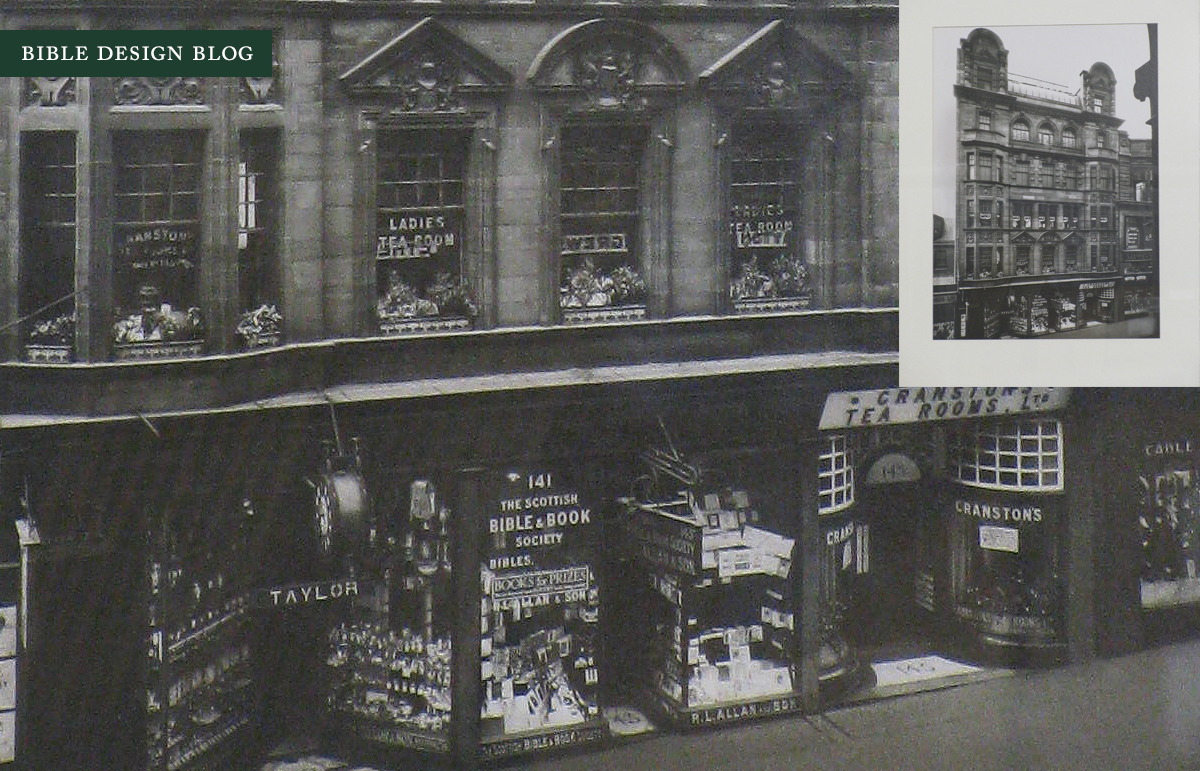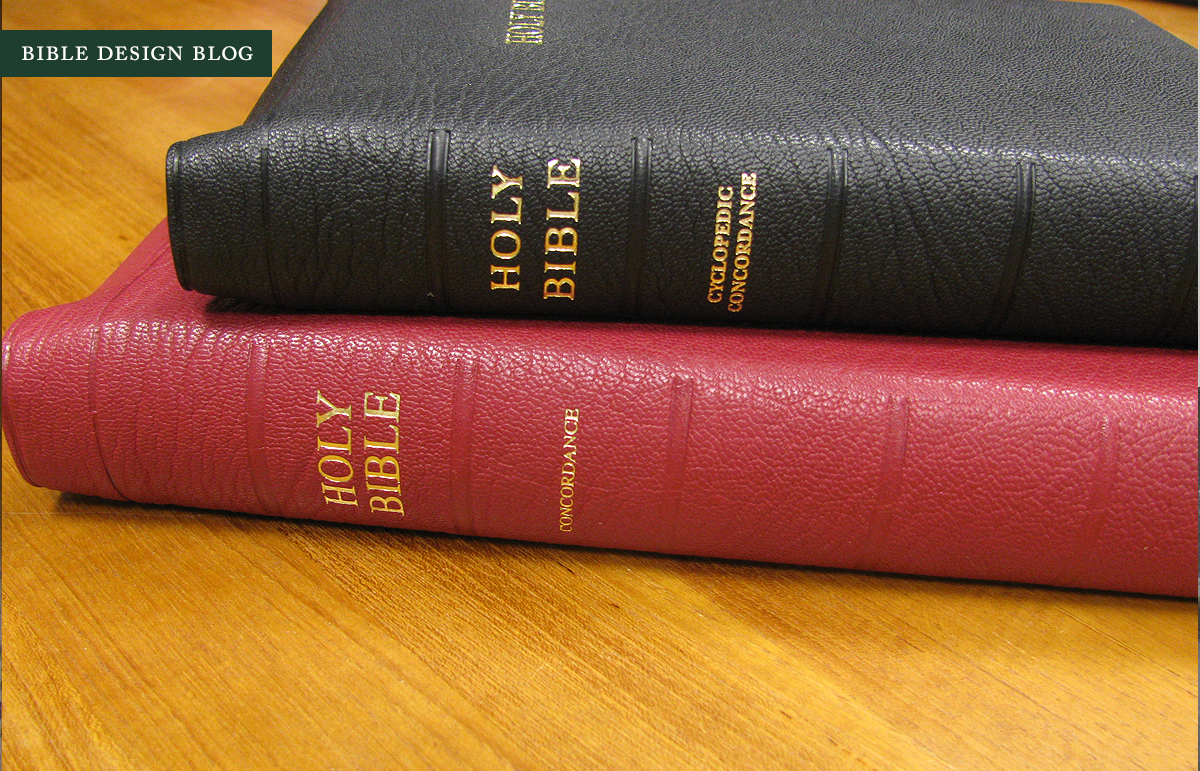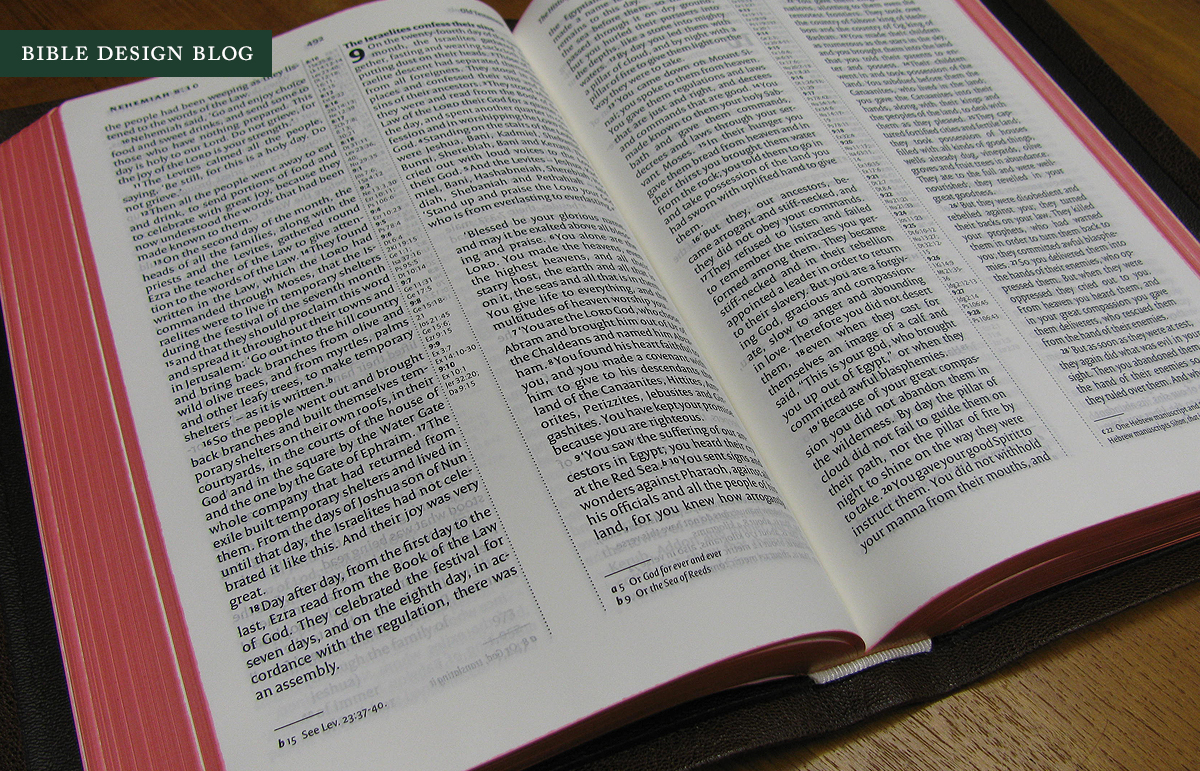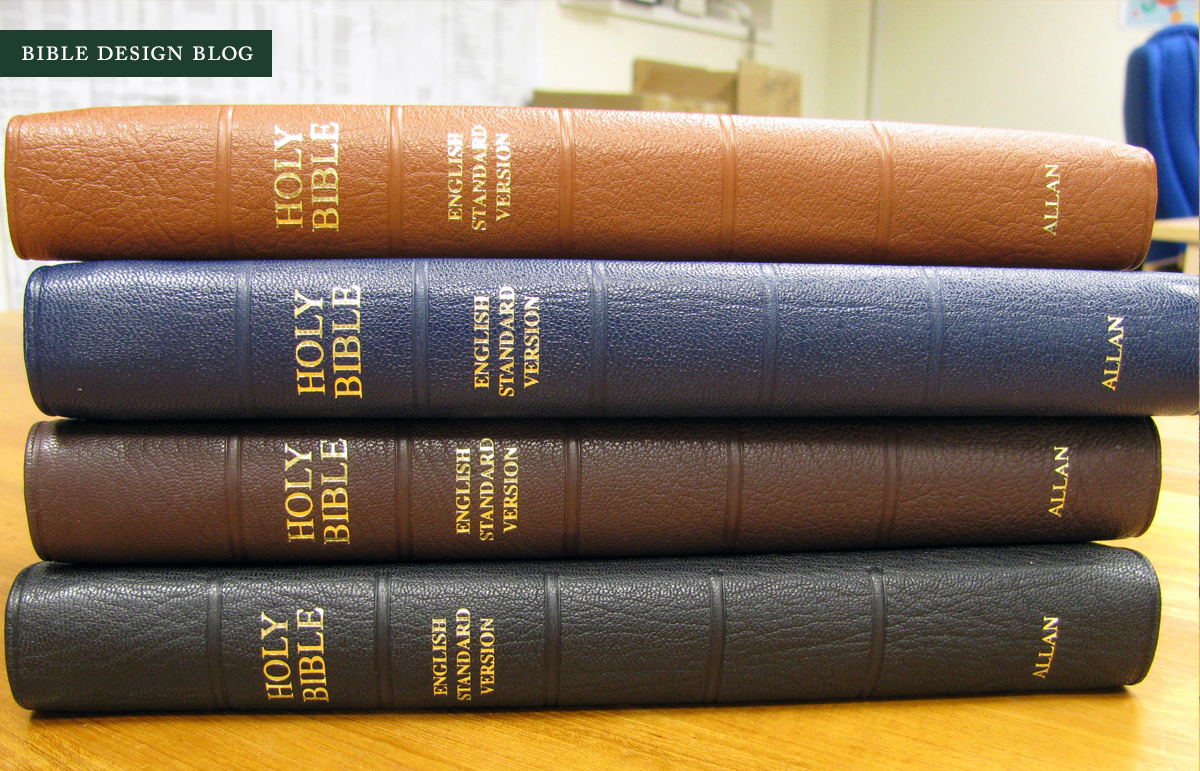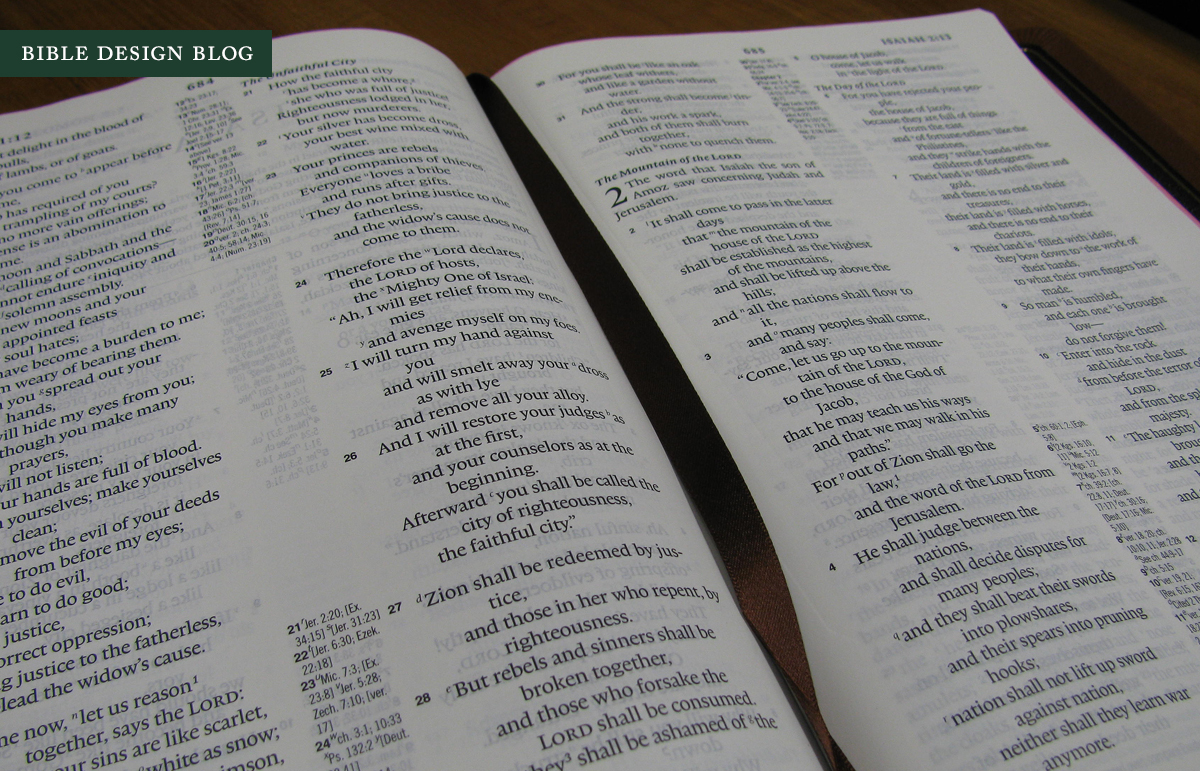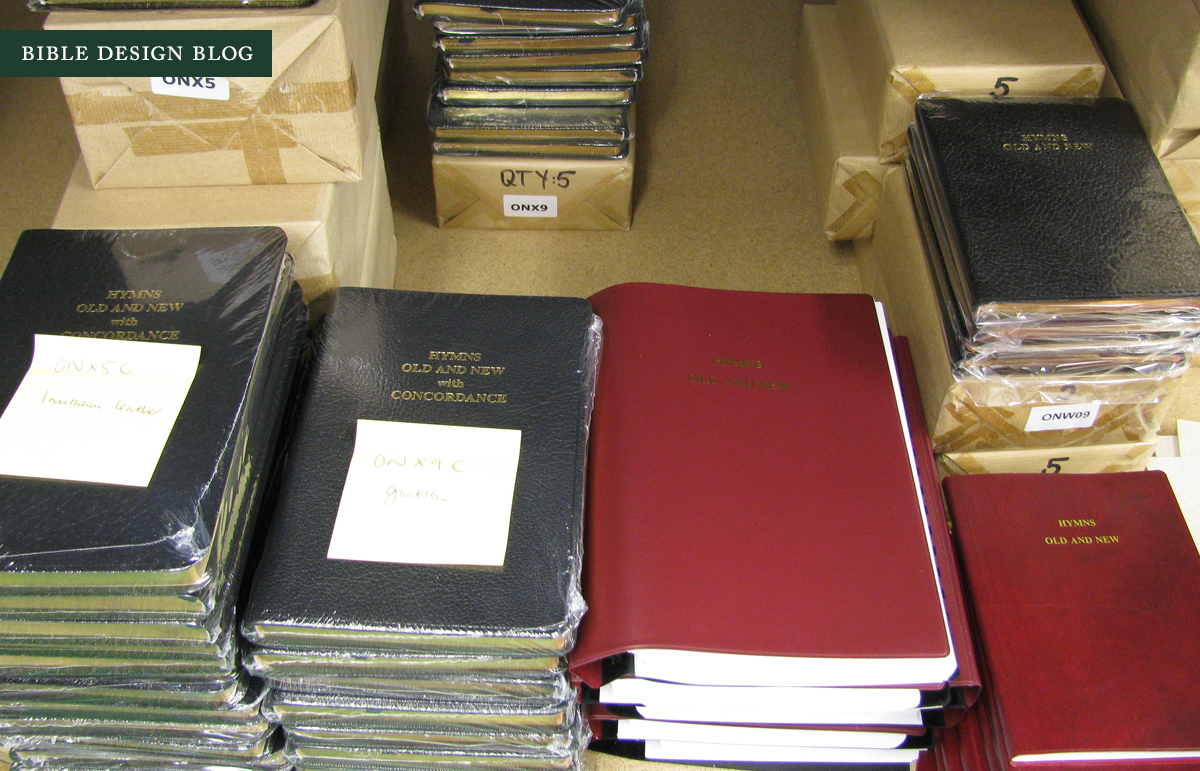A Visit to R. L. Allan
When I discovered that my friend Alan Cornett would be in London this month, an idea came to me: why not ask him to drop in on the new headquarters of R. L. Allan with camera in hand? Alan and I share a lot of interests, and his blog Pinstripe Pulpit is not to be missed. He embraced the notion and took time out of his schedule to sit down with Ian Metcalfe, the new director of R. L. Allan. Below is his report. Thank you, Alan! -- JMB
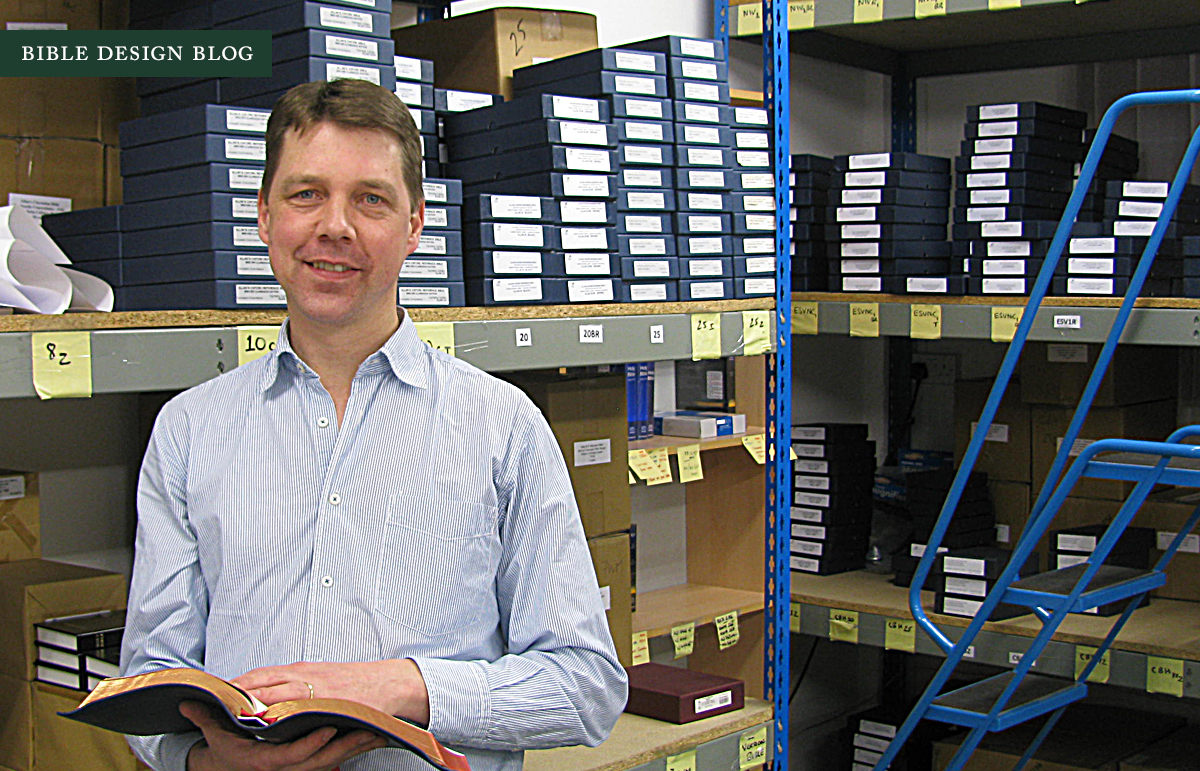
Who would have imagined in the age of iPads and bonded leather a Bible publisher specializing in deluxe bindings would see growth that doubled its size over the past decade? But R.L. Allan Bibles cannot keep its ESV editions in stock because of intense demand. New owner Ian Metcalfe sees a bright future for the 150 year old company.
While the King James Longprimer is still Allan’s bread and butter, it is “the Internet and the ESV that have driven our growth,” Ian told me over coffee and M&S flapjack bites in his Tolworth warehouse. The space is neat and clean, freshly stocked with boxes shipped from the old Allan headquarters in Glasgow. Every Allan’s customer loves the trademark blue box. Being surrounded with stacks of them will make you downright giddy.
Ian Metcalfe is the nephew of former Allan’s owner Nicholas Gray, taking over the enterprise along with his wife Dominique on November 27, 2013. Gray still consults, and visits with Metcalfe monthly, but Ian brings extensive Bible publishing experience himself. Formerly at HarperCollins, and now Publishing Director at Hodder & Stoughton, he was instrumental in bringing a number of translations to the UK public. In his job with major Bible publishers, he has even sold unbound printed sheets to R.L. Allan over the years. Allan’s NIV Versa type edition actually was set by Ian in his day job.
The US is the biggest driver of Allan’s sales with 70% of its Bibles going to the States. Only 15% stay in the UK. Despite its wide popularity, NIV editions make up only a small portion of Allan’s sales. “NIV readers are not as interested in the physical book,” Ian observed.
Ian explained that the large Bible publishers, many of them suppliers of unbound sheets to R.L. Allan, are happy about Allan’s existence. With Allan’s filling the high end Bible niche, the big boys don’t feel the pressure to offer fine editions in every color. At the same time, Allan’s has shown there is a real demand for quality Bibles, which has lead to a revived interest in producing for the high end market from some larger houses. Ian was complimentary of Cambridge’s work, and also of Crossway. Despite its short time as a Bible publisher, and its non-profit status, he admired Crossway’s aggressiveness in reacting to the market and producing quality Bibles.
The perennial production challenge for R.L. Allan is binding. Ian explained that meeting the printing demand is never a problem, but the handmade nature of their bindings means there are only so many Bibles that can be bound. Allan’s lovely art-gilt edges, for example, can only be done by two firms in the UK. He constantly is exploring additional options that meet the standards Allan’s has set.
Ian is well aware of the constant push for opaque paper, and we joked about the mythical thinline with completely opaque paper Bible. He also brought up the concern for proper text line matching, something he said he is “passionate” about, but also mentioned unique challenges like the possible distraction of line matching with verse.
During the course of our conversation Ian shared some thoughts about the gender inclusive language translation debate. “It’s not gender inclusivity,” Ian said, “but gender accuracy.” That is, translators are trying to capture the intent of the text, not bending to a social agenda. While the NIV 2011 has received most of the press over the issue, “the existence of the ESV opened the way for the NIV 2011. The ESV showed gender inclusive could be done.” The market would accept gender inclusive language after all.
In the future R.L. Allan wants to maintain its classic editions backlist while exploring new options. Ian indicated a particular desire to expand the Longprimer format into different translations, and showed me the newly restocked KJV Longprimer colors. The NLT edition is scheduled for release in February.
I didn’t want to leave the warehouse empty handed, and hinted about buying one of Allan’s website password protected hymnals for my wife. Ian politely declined to sell me one. I did end up with a red Allan’s journal, which includes the challenge of finding something profound enough to write in such a gorgeous blank canvas.
R.L. Allan has survived for a century and a half. With Ian and Dominique at the helm, Allan’s seems to be in good hands for another generation.
J. Mark Bertrand is a novelist and pastor whose writing on Bible design has helped spark a publishing revolution. Mark is the author of Rethinking Worldview: Learning to Think, Live, and Speak in This World (Crossway, 2007), as well as the novels Back on Murder, Pattern of Wounds, and Nothing to Hide—described as a “series worth getting attached to” (Christianity Today) by “a major crime fiction talent” (Weekly Standard) in the vein of Michael Connelly, Ian Rankin, and Henning Mankell.
Mark has a BA in English Literature from Union University, an MFA in Creative Writing from the University of Houston, and an M.Div. from Heidelberg Theological Seminary. Through his influential Bible Design Blog, Mark has championed a new generation of readable Bibles. He is a founding member of the steering committee of the Society of Bible Craftsmanship, and chairs the Society’s Award Committee. His work was featured in the November 2021 issue of FaithLife’s Bible Study Magazine.
Mark also serves on the board of Worldview Academy, where he has been a member of the faculty of theology since 2003. Since 2017, he has been an ordained teaching elder in the Presbyterian Church in America. He and his wife Laurie life in Sioux Falls, South Dakota.

